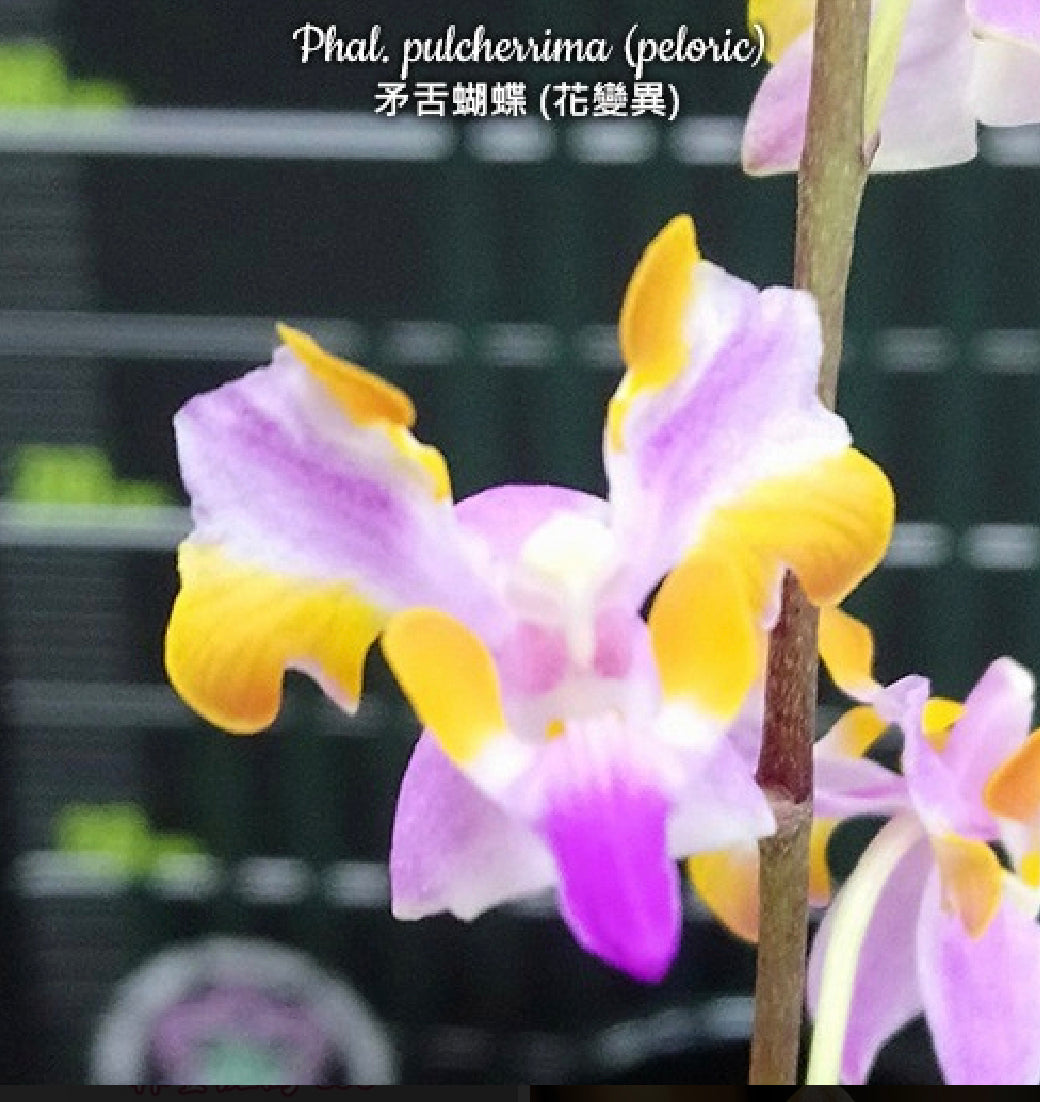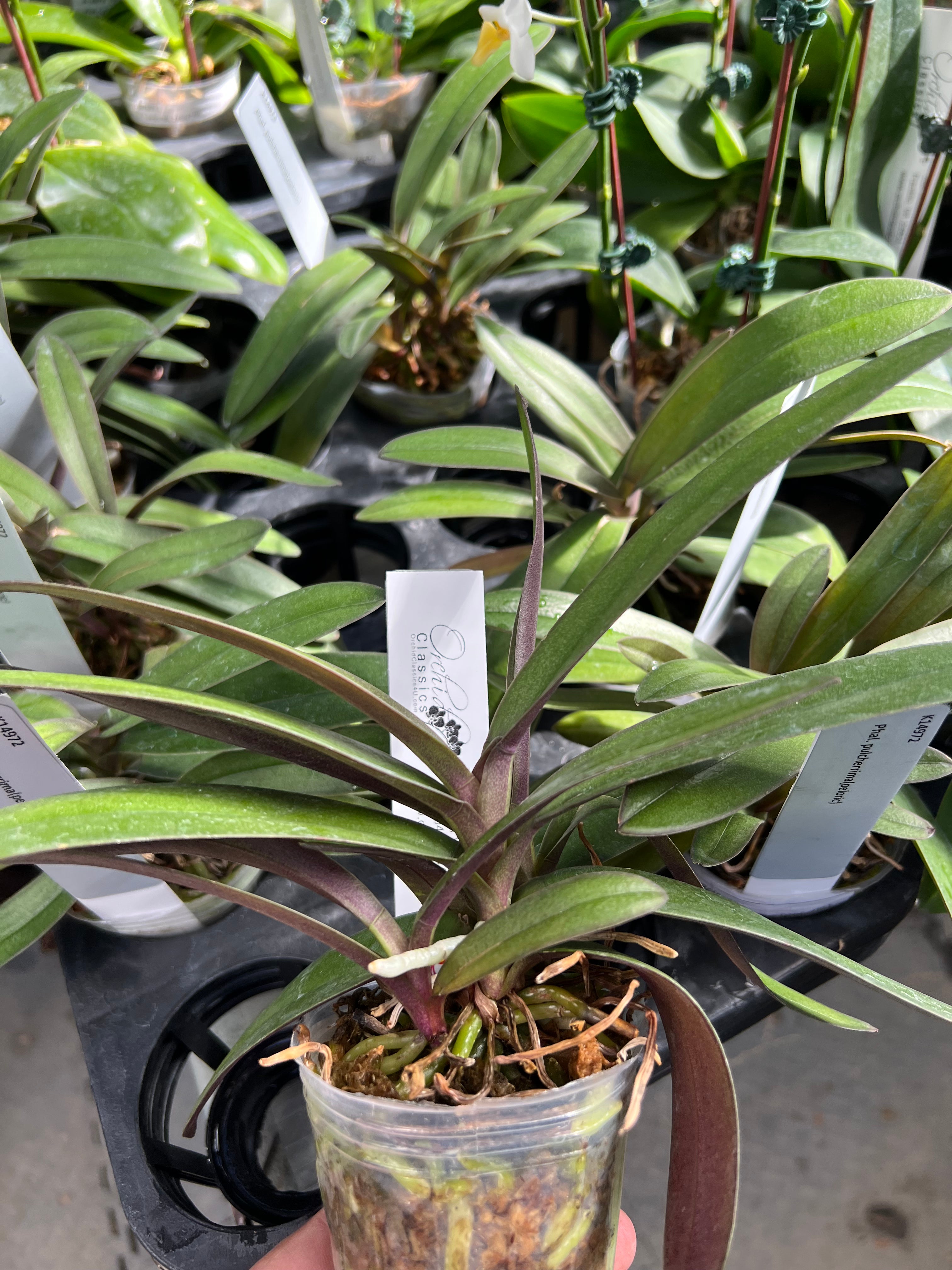
The genus Doritis is small one but unique one and is closely related to Phalaenopsis. As a result based on the DNA evidence, the genus DoritisLindl and Kingidium P.F.Hunt are now grouped under genus Phalaenopsisas per World Check list of Selected Plant Families. However, not every one in the field accepts these changes. In his latest revision of genus Phalaenopsis, Eric Christensen has again placed Doritis in this genus. The distinguishing features between the two being the presence of mentum (chin like appearance) in Doritis and also the pollinia count is different from some of the Phals. The species Doritis pulcherrima (now known as Phalaenopsis pulcherrima) is considered to be a terrestrial in its natural habitat indicated by the erect upright inflorescence.
This is predominantly a low land species growing along the river beds in sandy soils under the shade of trees and shrubs. The name Doritiscomes from the Greek word ‘Dory’ meaning ‘spear’ referring to the shape of the lip. Recently in 2010 a new species Doritis natmataungensiswas found in Myanmar
Distribution: The plants are distributed in SE Asia, India, China, Myanmar, Vietnam and Indonesia.
Plant: It is a medium sized plant. The plant habit is mostly terrestrial and some are epiphytic. It is monopodial in habit and has thick leathery green leaves with purple surface underneath. The plant is unique with its roots appearing like stilt roots rising out of the media. Roots arise from the leaf axil and several off shoots are produced at the base giving an appearance of cluster of plants. Inflorescence emerges from the base of the leaves which is erect and distinguishes from Phalaenopsisand this could be due to the terrestrial habit of the plant. Plants can tolerate high light conditions. Blooms are produced during summer. Due to its wide distribution in SE Asia, there are several colour forms with varying shades. The common ones are the purple ones and the yellow colour form on the petals is a beautiful one. This is found in the Chumporn province of Thailand and thus gets its name Doritis pulcherrima var. Chumpornensis. There is another one D.pulcherrima var.buyssoniana. Now generally plants with strong growth and have larger flowers are given the varietal name.
Culture: Plant in its natural habitat grows under shade of trees and shrubs, it likes lot of light andgrowing it under 50 % shade net is preferable. It can withstand warmer temperatures of 32 C as in case of many tropical orchids. Watering thoroughly and allowing the media to dry before watering is ideal schedule. During the growth period, the plant prefers to be moist but not wet. Humidity levels of 55-60 % need to be maintained.
The plant prefers well drained media comprising of fine CHC, little coco peat, sand and charcoal. Once the plant starts growing the roots tend to show outward and this is also an indication for repotting. They prefer smaller clay pots and do not over pot the plants as they are small. Reptting can be taken up after the blooms. The spikes after the blooms fade, if cut back, may produce second set of blooms. Plants can be propagated by dividing the offshoots with roots.
actual plants shown , 2,5” pots , flowering size , multiple plants per pot.
Returns Policy
Due to the delicate nature of our orchids, all of our products may not be returned. If you're unhappy with your purchase, please contact orders@orchidclassics2u.com with your order number and reason for dissatisfaction with your order. We will do our very best to ensure you're happy with your Orchid Classics shopping experience.
Shipping
We can ship to virtually any address in the world. Note that there are restrictions on some products, and some products cannot be shipped to international destinations.
When you place an order, we will estimate shipping and delivery dates for you based on the availability of your items and the shipping options you choose. Depending on the shipping provider you choose, shipping date estimates may appear on the shipping quotes page.





